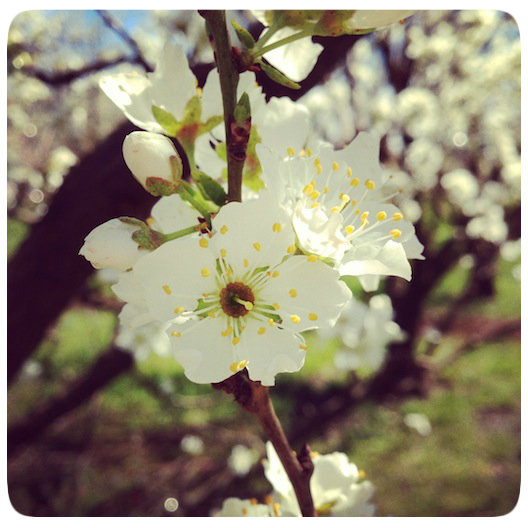Sometimes Seeing the Beauty
There is an eye with which we experience the world, an interaction between the object perceived and the observer. Often times two people looking at the same object or event can see very different things. It is a Confucius-like allusion that could be stated as: “What you see depends upon where you look,” or “how you look depends upon where you go,” or even “what you see depends upon how you know to see.” An eye trained with experience and wisdom might see an object or situation differently than a younger one trained in the same discipline. If ‘beauty is in the eye of the beholder,’ we may develop a collective eye for what is considered beautiful, or the appreciation of beauty may be as varied as cultures, sensibilities or each perceiver.
We had our Open Farm Day this weekend and had about 150 farm-curious come by to take a wagon ride, see the farm, have their kids run around, and/or listen to one of the partners squawk about fields, fruit trees, hedgerows for pollinator habitat or farm fertility. These subjects are not so glamorous, but are beautiful from our perspective, as we witness the complex textures of nature and the myriad forms of life that we are entrusted to consider as we go about the act of producing and exporting food from this land. No doubt, each visitor was looking at the farm and seeing the peach bloom, flower fields, and green crops of broccoli or spinach through their own lenses of appreciation, while the tour helped to inform what they were seeing.
I have long believed that to understand what we are trying to do as stewards and producers, one needs to actually walk the farm, listen to the birdlife or the hum of insect life in an orchard, smell the soil’s fertile funk, or see chicken character in full display as they scratch our vineyards for leaf hoppers or bugs while eating green grass or clover. The 360-degree engagement of senses is at the heart of beginning to appreciate how much seeing can be done when one starts to look.
We can be as much constrained by what we know as we may be opened by our reverence for the unknown and our willingness to explore the wilderness on the edge of knowing. A cantankerous elder of my childhood who fished and camped and had time to expound beliefs around a campfire used to say “don’t believe anything you read and only half of what you see.” He taught me to believe less than half of what he said – and yet cajoled me to look with open eyes, to explore, to test the edges and to harbor healthy skepticism.
As I look at the farming world as practiced by so many farmers in the ‘mainstream,’ it is easy to notice a few troubling trends. In February and March, in this amazing Mediterranean climate of California, there is a starkness on most central valley farms. Instead of the lush green of winter grass, fields and edges have been sprayed with herbicides and brown grass and bare soils have become acceptable forms of good stewardship.
The eye of a farmer may see uniformity and order reflected in weed-free edges, fewer trees along edges, bare fields all winter long or orchard floors that have been sprayed and are completely bare and devoid of life. Their ‘eye’ is seeing the brown of dead grass in winter as evidence of good farming practices – an effective control of both crop and non-crop areas. There is a desert in the making with this type of eye.
These edges have been the home of the rodents and snakes that support the hawk or owl. The edges are where ground bees like bumble bees and other pollinators reside in the undisturbed unfarmed soils that they need to survive. These pollinators are increasingly recognized as critical to pollination of crops that require insect life to make fruit. They need shade and soils that are layered with the decaying grasses and organic material of many seasons. Fields and orchards that could be growing green matter and thus harvesting winter CO2 and nitrogen from the air are sprayed bare. Fields that could have the gentle force of probing root hairs from plants as living covers, opening soil and allowing the rain that does fall to penetrate and go into the soil rather than off of the soil, are bare and crusted over.
Farms can by design be places of managed biological richness if we can re-think beauty and see differently. This beauty can complement high productivity and help to create a far richer notion of good farming practices. It is time to include the concept of stewardship in the charge of the farmer as both the grower of our food and the keeper of the life that could reside there. Organic practices often look at these issues differently than the mainstream and the results seen are designs that weave productivity, healthfulness, flavor and stewardship together. As an organic farm supporter you are creating another pathway to sustainability. As a visitor to the farm you can witness the effort as we try to grow better tasting food in an environment that buzzes with all forms of life. We hope that you take the opportunity to get to the farm and look, hear and see with us, and we thank those who have made the journey to visit.
— Paul Muller

